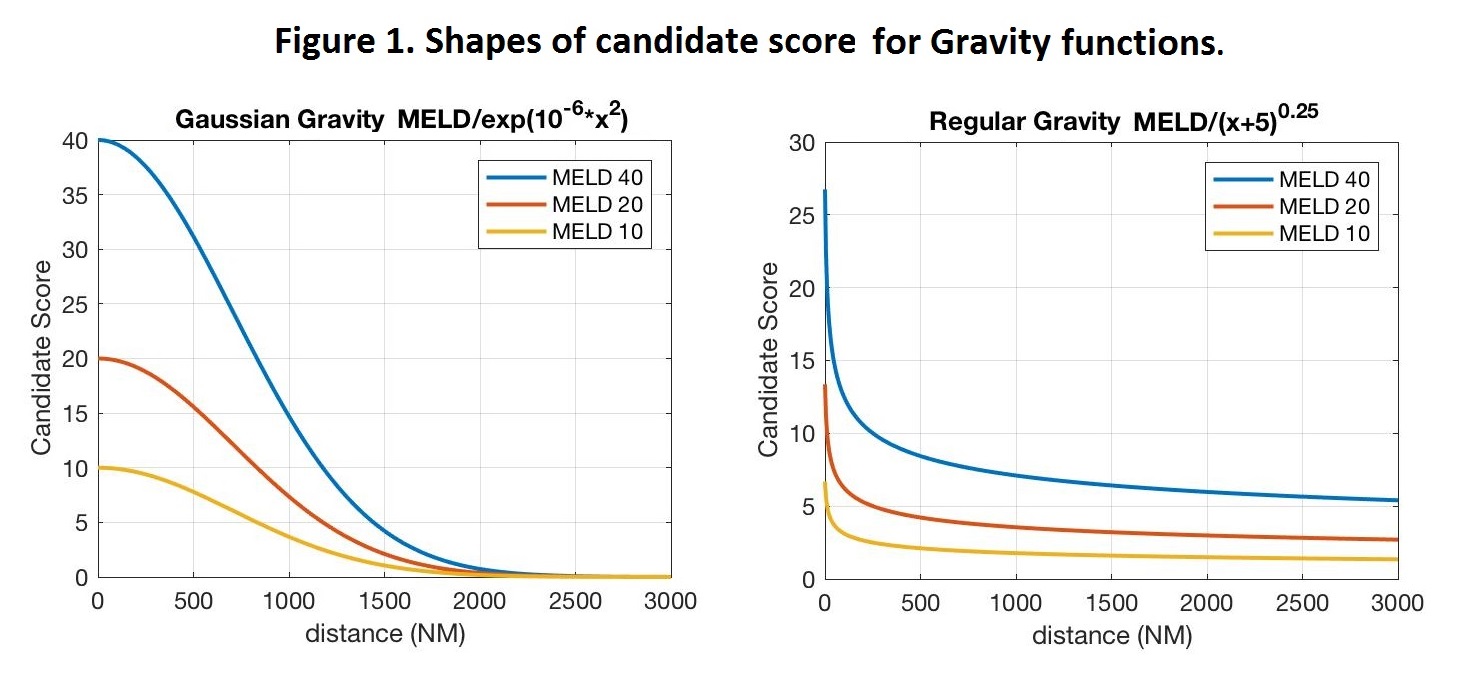Reducing Travel While Improving Geographic Equity: Continuous Distribution with “Gravity Functions”
1King Abdullah University of Science and Technology, Thuwal, Saudi Arabia, 2US Naval Academy, Annapolis, MD, 3Johns Hopkins University, Baltimore, MD
Meeting: 2020 American Transplant Congress
Abstract number: A-119
Keywords: Allocation, Liver
Session Information
Session Name: Poster Session A: Liver: MELD, Allocation and Donor Issues (DCD/ECD)
Session Type: Poster Session
Date: Saturday, May 30, 2020
Session Time: 3:15pm-4:00pm
 Presentation Time: 3:30pm-4:00pm
Presentation Time: 3:30pm-4:00pm
Location: Virtual
*Purpose: Recently, the OPTN board selected the continuous distribution framework for future organ allocation changes. Continuous distribution allocates organs without geographic boundaries, for example, by combining MELD with some function of the distance between donor and candidate. However, one of the biggest problems with reduction of geographic disparities is increased need for travel. We hypothesized that disparities can be reduced with less impact on travel by using a non-linear distance function known as a “gravity function.”
*Methods: We modeled a continuous prioritization defined by MELD/gravity, which gives higher priority to candidates near each donor. We compared two gravity functions (regular and Gaussian, Figure 1) with current allocation (CurrA), simulating 2015 liver offers with SRTR-LSAM. The allocation order was: 1A/1B candidates within 500 miles, >15MELD candidates within 500 miles, 1A/1B candidates beyond 500 miles, >15MELD candidates beyond 500 miles, all <15MELD candidates.
*Results: Both gravity functions reduced variance in DSA-level median MELD at transplant (MMAT) compared with current allocation (6.1/4.5 vs 10.8). The Gaussian and regular functions resulted in median transport distances of 233mi and 54mi versus 93 mi for current allocation. The percentage of organs flown was 74% for Gaussian and 40% for regular gravity, versus 51% currently. Average number of transplants/waitlist deaths was 6091/1090, 6201/1247, and 6118/1263 for Gaussian, regular, and current allocation (Table).
*Conclusions: The regular gravity function actually decreased average travel distance compared with current allocation, while also reducing variance in DSA-level MMAT. The Gaussian gravity function failed to decrease the average travel distance but significantly decreased waitlist deaths.
| Gaussian Gravity Function | Regular Gravity Function | Current Allocation | |
| DSA-level variance in MMaT | 4.5 (2.63-6.33) | 6.1 (4.68-7.76) | 10.8 (9.04-12.70) |
| MMaT | 30.0 (30.00-30.00) | 28.0 (28.00-28.00) | 28.0 (28.00-28.00) |
| Median Transport Distance (miles) | 233.0 (230.63-235.04) | 53.8 (47.41-58.32) | 93.1 (88.71-97.76) |
| Percentage of organs flown | 74.4 (73.1, 75.6) | 40.2 (39.3, 41.3) | 51.1 (49.2, 51.9) |
| Transplanted Organs | 6090.8 (6002,6187) | 6201 (6146,6329) | 6118.4 (6022,6283) |
| Waitlist Deaths | 1089.9 (1051,1135) | 1246.7 (1216,1293) | 1263.1 (1224,1312) |
| *All metrics reported as mean (min, max) across the 10 simulation runs | |||
To cite this abstract in AMA style:
Mankowski M, Wood N, Gentry S, Segev D. Reducing Travel While Improving Geographic Equity: Continuous Distribution with “Gravity Functions” [abstract]. Am J Transplant. 2020; 20 (suppl 3). https://atcmeetingabstracts.com/abstract/reducing-travel-while-improving-geographic-equity-continuous-distribution-with-gravity-functions/. Accessed December 20, 2025.« Back to 2020 American Transplant Congress

